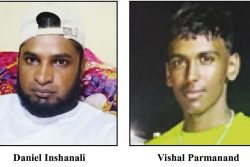A human rights group recently released footage of what appeared to be summary executions carried out by the Sri Lankan Army (SLA) during the endgame of the country’s 26-year civil war. In the video, naked men, blindfolded and with arms tied behind their backs, are kicked to the ground and shot in the head at close range by a man in military uniform. As the bodies fall, other corpses can be seen nearby, with pools of blood issuing from head wounds. The Sri Lankan government has dismissed the video as Tamil propaganda and seems unlikely to agree to an official request for a full investigation by Philip Ashton, the UN Special Rapporteur on extrajudicial, summary or arbitrary executions.
In the current edition of the Indian Defence Review, a trenchant analysis of the Rajapaksa government’s strategy, sets out quite clearly its reliance on unfettered military force as it moved against the Liberation Tigers of Tamil Eelam (LTTE) late last year. Mindful of previous military failures, the government offered the SLA complete freedom in the final months of the campaign, and even promised to shield it from the scrutiny of an independent press, or pressure from humanitarian agencies and the international community. A sustained campaign of physical intimidation, death threats and, in the notorious case of the Sunday Leader editor Lasantha Wickramatunga, murder, kept the local press effectively muzzled. Meanwhile, a hand-picked team of field commanders who were willing to prosecute a total war, military intelligence from India, and a crucial defection from the LTTE’s senior ranks, allowed the SLA to crush the Tigers’ traditional strongholds with terrifying ruthlessness.
In the final months of the campaign credible estimates place the number of civilian casualties at 8,000 – out of a total of 80,000 for the entire war. It is impossible to establish accurate figures, largely because of the independent media’s restricted access to the front line. (The appalling conditions in which as many as 280,000 Tamils are being “detained” after the conflict is another tragedy that has gone largely unreported.) What makes the bloody end of the Sri Lankan war so disturbing, however, is not the vengeful quality of the government’s campaign – which is partially understandable, given the ferocity, and nihilism of the LTTE’s military strategy – but its conscious decision to call the bluff of the international community. As the Indian Defence Review article points out, the Rajapaksas (the President, Mahinda, and his two brothers Gotabaya and Basil) resolved quite deliberately to tell all outsiders to “go to hell” whenever they tried to intervene. The military success that resulted from this dismissive attitude, regardless of its human cost and the many provocations it leaves behind for further terrorism, is bound to encourage other ethnic majorities who face minority insurgents – Russia, Iraq, and Israel are obvious candidates – to deploy equally cynical strategies.
Part of the blame for the slaughter should also be placed at the feet of the vague and every-shifting presence that the media often refers to as the “international community,” for its failure to pre-empt this predictable end-run around its monitoring and mediation of the conflict. Nowadays, whenever they are faced with determined human rights violators, many western governments effectively wash their hands of any responsibility by declaring the situation a “humanitarian crisis” – as though these somehow arise and disappear within a vacuum. Long before the Bush doctrine showed the toothlessness of the United Nations, it was clear that modern humanitarianism had lost its way in this regard. Instead of entering war zones to care for the sick and wounded, international relief agencies have become all but complicit in the geopolitical manoeuvring that surrounds these “crises.” As commentators like Philip Rieff have pointed out, we have become so accustomed to slipshod references to “humanitarian crises” that western governments have been able to get away with tolerating prolonged low-intensity warfare via the rhetoric of humanitarian action, instead of shouldering the more cumbersome and politically risky responsibilities of military peacekeeping, or outright confrontation. In this brave new world, the UN High Commission for Refugees ends up stopping flows of refugees across international borders instead of helping people once they have fled across those borders; and the UN Human Rights Council, as it did in late May, passes a resolution celebrating Colombo’s victory over the Tamils, instead of addressing itself to the many abuses perpetrated by both sides during the conflict.
Government impunity is nothing new in Sri Lanka, but it has usually been tempered by a sense of vulnerability, a sense that one day the Tamils would have to be accommodated with a reasonable political settlement. Now that the Rajapaksa’s are confident of lasting military victory, however, there is no longer any incentive for them to heed calls for fair treatment of the subjugated Tamils, or indeed to fear international action should they carry on intimidating their opponents, or anyone who can corroborate reports of the army’s atrocities en route to victory. Having gambled and won the war with a strategy that made a nonsense of international mediation, Colombo will not soon feel the need to change its ways, unless a powerful international actor, like the US or the EU, is prepared to challenge the government with something more than the standard rhetoric. Until then, it will likely take much more than graphic video footage to stir the machinery of international justice into action.








